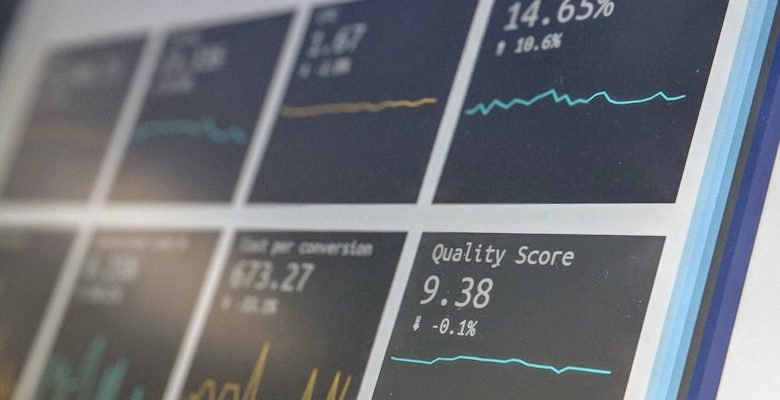How to Read Crypto Charts and Basic Technical Analysis

- Understanding the basics of crypto charts
- Introduction to technical analysis for cryptocurrency
- Key indicators to look for in crypto charts
- Reading candlestick patterns in cryptocurrency trading
- Utilizing support and resistance levels in technical analysis
- Common mistakes to avoid when analyzing crypto charts
Understanding the basics of crypto charts
Cryptocurrency charts are visual representations of the price movements of digital assets over a certain period. By analyzing these charts, investors can gain valuable insights into market trends and make informed decisions about buying or selling crypto. Understanding the basics of crypto charts is essential for anyone looking to navigate the volatile world of cryptocurrencies.
There are several types of crypto charts, including line charts, bar charts, and candlestick charts. Line charts are the most basic type, showing the closing prices of a cryptocurrency over time. Bar charts provide more detailed information, including the opening and closing prices as well as the high and low prices. Candlestick charts are the most popular among traders, as they offer a more visual representation of price movements.
When reading a crypto chart, it is important to pay attention to key indicators such as support and resistance levels, moving averages, and volume. Support levels are price points where a cryptocurrency tends to find buying interest, while resistance levels are price points where selling interest tends to be strong. Moving averages help smooth out price data to identify trends, while volume indicates the level of activity in the market.
Introduction to technical analysis for cryptocurrency
When it comes to analyzing cryptocurrency charts, technical analysis is a key tool that traders use to make informed decisions. Technical analysis involves studying historical price data and volume to predict future price movements. By identifying patterns and trends in the charts, traders can gain insight into where the price may be headed next.
One of the fundamental principles of technical analysis is that history tends to repeat itself. This means that patterns that have occurred in the past are likely to occur again in the future. By recognizing these patterns, traders can make educated guesses about how the price of a cryptocurrency will behave.
Technical analysis for cryptocurrency involves using a variety of tools and indicators to analyze price charts. Some common tools include moving averages, support and resistance levels, and trendlines. These tools can help traders identify potential entry and exit points for their trades.
It’s important to note that technical analysis is not foolproof and should be used in conjunction with other forms of analysis. However, many traders find it to be a valuable tool for making informed decisions in the cryptocurrency market.
Key indicators to look for in crypto charts
When analyzing crypto charts, there are key indicators to look for that can provide valuable insight into market trends and potential price movements. These indicators can help traders make more informed decisions when buying or selling cryptocurrencies.
One important indicator to consider is the moving average, which shows the average price of a cryptocurrency over a specific period of time. By analyzing the moving average, traders can identify trends and potential support or resistance levels.
Another key indicator to look for is the relative strength index (RSI), which measures the speed and change of price movements. An RSI above 70 typically indicates that a cryptocurrency is overbought, while an RSI below 30 suggests that it may be oversold.
Volume is also an important indicator to consider when analyzing crypto charts. High trading volume can indicate strong market interest and potential price movements, while low volume may signal a lack of interest or liquidity.
Other indicators to watch for include trendlines, support and resistance levels, and chart patterns such as head and shoulders or triangles. By understanding these key indicators and how to interpret them, traders can improve their technical analysis skills and make more informed trading decisions in the cryptocurrency market.
Reading candlestick patterns in cryptocurrency trading
When it comes to cryptocurrency trading, one of the key skills that traders need to develop is the ability to read candlestick patterns. Candlestick patterns are a visual representation of price movements over a specific period of time, typically ranging from minutes to days. By understanding these patterns, traders can gain valuable insights into market sentiment and make more informed trading decisions.
There are several common candlestick patterns that traders should be familiar with, including doji, hammer, shooting star, engulfing, and harami patterns. Each of these patterns conveys different information about the market, such as potential reversals or continuation of trends. By recognizing these patterns on crypto charts, traders can anticipate potential price movements and adjust their trading strategies accordingly.
For example, a doji pattern, which consists of a candle with a very small body and long wicks, indicates indecision in the market. This could signal a potential reversal in the current trend. On the other hand, an engulfing pattern, where a large candle completely engulfs the previous one, suggests a strong shift in market sentiment. By paying attention to these patterns, traders can better predict future price movements and take advantage of profitable trading opportunities.
Utilizing support and resistance levels in technical analysis
One of the key concepts in technical analysis is the utilization of support and resistance levels when reading crypto charts. Support levels are price points where a downtrend is expected to pause due to a concentration of buying interest. On the other hand, resistance levels are areas where selling interest is concentrated, causing a potential halt in an uptrend.
When analyzing crypto charts, traders look for these support and resistance levels to make informed decisions about when to enter or exit a trade. By identifying these levels, traders can set stop-loss orders to protect their investments or take profit when the price reaches a certain threshold.
Support and resistance levels can be identified through various technical analysis tools such as trendlines, moving averages, and chart patterns. These levels act as psychological barriers for the price movement of a cryptocurrency, indicating potential areas of supply and demand.
By understanding and utilizing support and resistance levels in technical analysis, traders can improve their decision-making process and increase their chances of success in the volatile crypto market. It is essential to combine this knowledge with other technical indicators to form a comprehensive trading strategy that considers multiple factors influencing the price movement of cryptocurrencies.
Common mistakes to avoid when analyzing crypto charts
When analyzing crypto charts, there are several common mistakes that traders should avoid to ensure accurate interpretation of the data. One of the most common mistakes is relying too heavily on a single indicator or signal. It is important to consider multiple factors and indicators when analyzing crypto charts to get a more complete picture of the market trends.
Another mistake to avoid is not taking into account the overall market conditions and trends. Crypto markets can be highly volatile and influenced by external factors, so it is crucial to consider the bigger picture when analyzing charts. Ignoring the broader market trends can lead to misinterpretation of the data and poor trading decisions.
Additionally, many traders make the mistake of letting emotions dictate their trading decisions when analyzing crypto charts. It is important to remain objective and rational when interpreting the data to avoid making impulsive decisions that could result in losses. Emotions such as fear and greed can cloud judgment and lead to poor trading outcomes.
Lastly, a common mistake that traders make when analyzing crypto charts is not having a clear trading strategy in place. It is essential to have a well-defined plan and set of rules for entering and exiting trades based on the analysis of the charts. Without a solid strategy, traders may fall victim to impulsive decision-making and inconsistent results.



